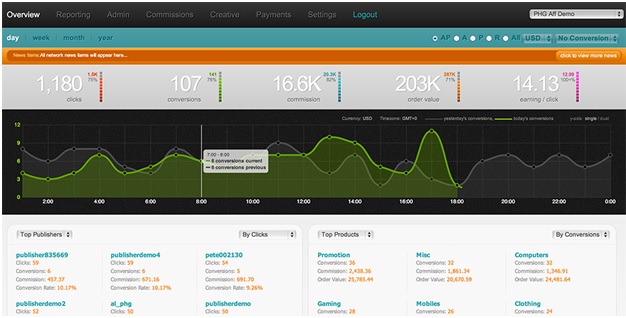The concept of data-driven decisions has permeated the affiliate marketing channel. With tracking solutions providing access to deeper data, many brands are benefiting from insights into how affiliates are driving traffic, and what that traffic is really worth.
As such, affiliate managers now have the tools to determine the value of individual partners in their programs, which enable them to fully maximize revenue through the affiliate channel. “Using data such as affiliate click path analysis and detailed product data allows affiliate managers to determine each affiliate partner’s worth,” explains Malcolm Cowley, CEO of Performance Horizon Group, the company behind ExactView, a reporting, tracking and analytics platform.
Affiliate click path analysis provides attribution insight into an affiliate-driven transaction. For example, if a consumer were initially referred to a retailer’s site by a blog, but then paused midway through checkout to locate a discount code from a coupon affiliate, the click path will show the involvement of both affiliates in the transaction process. At this point, it is up to the affiliate manager to determine how to attribute ad spend. Should the commission associated with the transaction be awarded to the last click, which is the coupon affiliate? With many existing programs, this would be standard best practice. However, once the affiliate manager understands that the consumer was not solely driven by the coupon affiliate, the affiliate manager may want to award a commission to the blog site, or they may want to split commission between both sites. Regardless, click-path data provides the affiliate manager with the option. Not all affiliate tracking platforms provide this level of insight. A few that do include ExactView, Impact Radius, AvantLink, and ShareASale.
The ability to analyze product-level data is also critical to determining the value of an affiliate partner, to see which affiliates drive the highest profitability. Some affiliates may be better at driving discount-seekers, useful when retailers need to clear out inventory, while other affiliates may specialize in specific product categories.
Additionally, one of the benefits of today’s affiliate reporting platforms is that many of them enable access to real-time data. This provides affiliate managers with instant insight into the impact of promotions. It also enables affiliate managers to spot spikes and detect potential fraud. Equipped with this information, an affiliate manager can decide to extend a promotion, to identify successful placements, or to stop payment to a rogue advertising partner.

ExactView dashboard.
The ability to delve deep into data is relatively new for affiliate marketing. Previously, the focus was on the number of affiliates and the volume of sales. Today, several reporting platforms enable affiliate managers to shift that focus from quantity to quality. Now, instead tracking the number of affiliates in a program, affiliate managers are tracking the number of affiliates driving clicks, and the number of affiliates driving sales. Instead of focusing on overall sales volume, affiliate managers are looking at new and existing customer ratios and lifetime value. Based on this information, affiliate managers are optimizing their programs by negotiating mutually favorable terms with affiliates that generate the best return on investment.
Cowley, with ExactView, believes that this drive toward deeper, richer data is driven by brands recognizing that performance-based marketing is fast becoming a dominant online business model due to its cost efficiency. “Performance marketing now incorporates an ever growing mix of different marketing models, and marketers need to understand the different roles these models play in order to decide where their budget is best spent,” he says.
If the data is available, affiliate managers have more freedom to customize terms with individual affiliates. For example, if the internal marketing focus is on driving subscriber acquisition, the affiliate manager can identify revenue share affiliates that have a high new customer ratio and partner with that affiliate on a lead campaign. Similarly, if the overall strategic initiative is to launch a new product category, the affiliate manager can identify relevant affiliates based on previous products sold, and negotiate for paid placement opportunities.
It’s not enough that data is available. An affiliate manager still needs to understand how to translate that data into actionable strategies. “The data itself is useless unless you can apply analysis, draw conclusions, and use that to affect a better result,” Cowley says.
The evolution of affiliate marketing doesn’t just stop here though. Cowley believes that as we layer in third-party data and other learned insights into real-time data, the affiliate channel will become even more efficient. “It’s pretty powerful now, but nothing compared to combining that data with other useful third-party data, adding in some machine learning, and using the resulting insight to model prediction and apply that in an automated way. That’s the future, and it’s closer than you think.”





